Engaging STEM Activities for Teens: Hands-On Projects
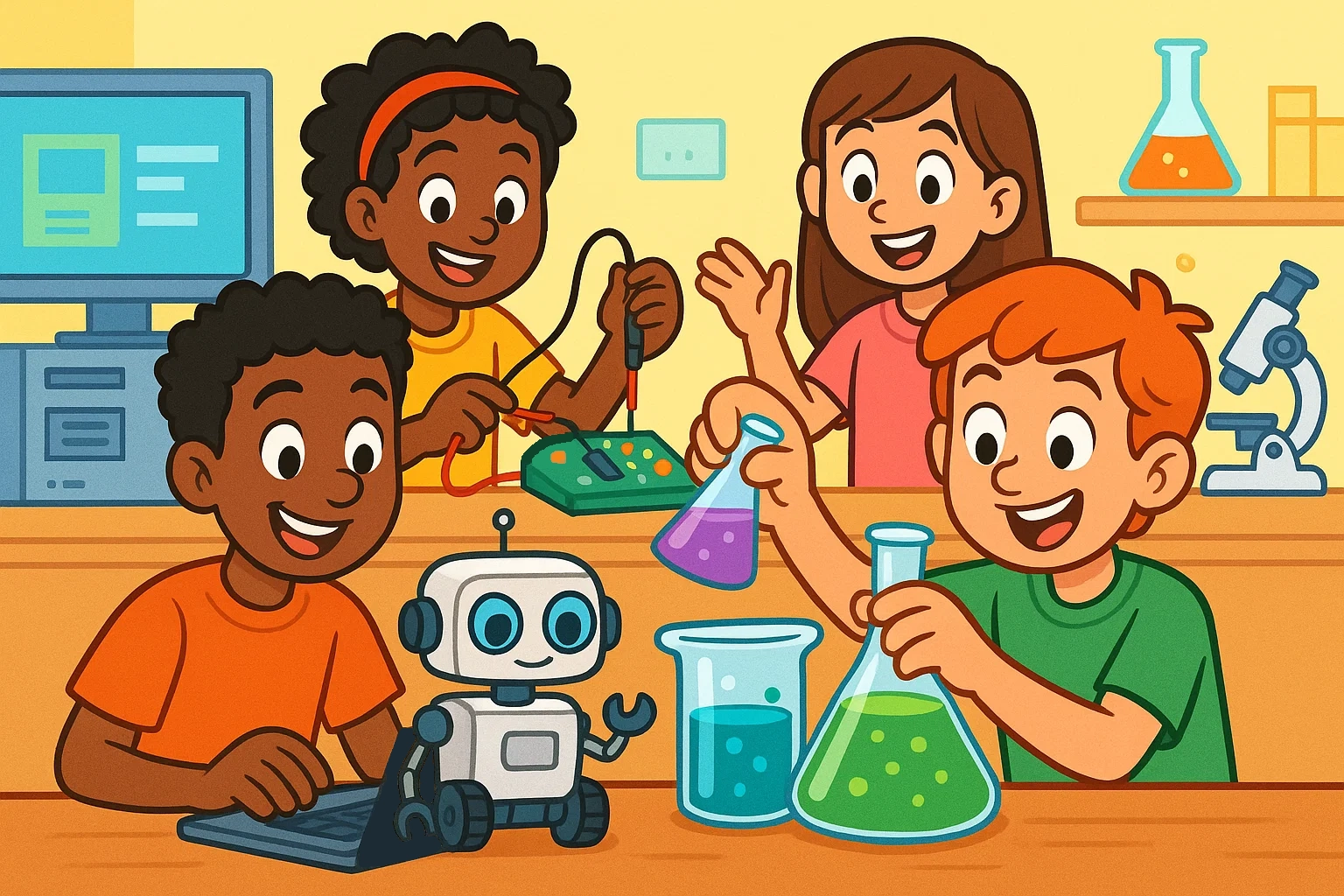
The teenage years represent a critical period for developing interest in STEM fields. During this time, students are naturally curious and capable of tackling complex challenges that can shape their future career paths.
These carefully curated STEM activities combine fun with learning, allowing teens to explore engineering principles, develop problem-solving skills, and gain hands-on experience with real-world applications. Each project encourages creative thinking while building the foundation for potential STEM careers.
Why STEM Projects Matter for Teens 🔬
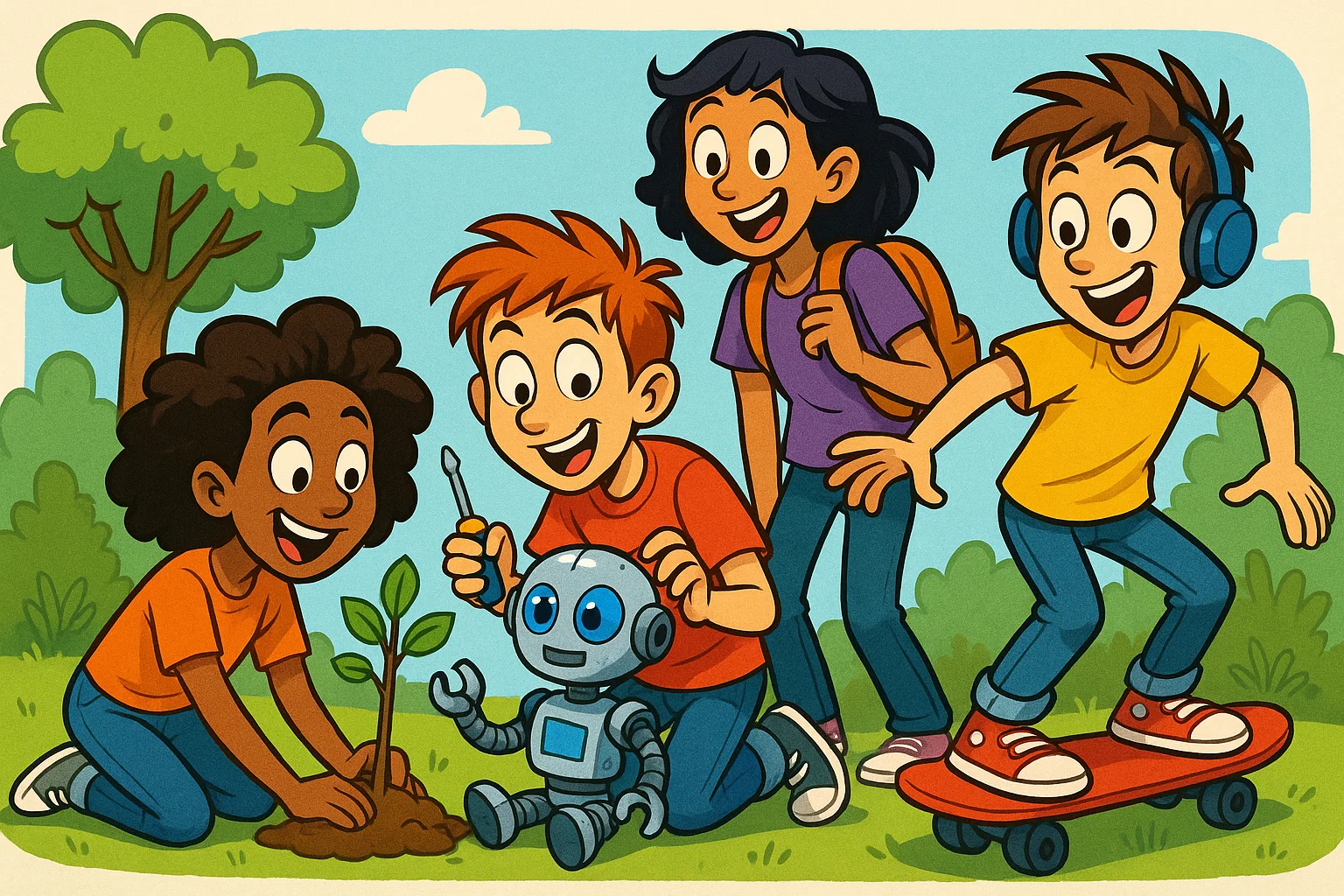
The teenage years are a time of discovery, and STEM projects offer a unique opportunity to channel that energy. Let’s explore why these activities are so crucial for their future.
Fostering Interest in STEM
Hands-on STEM activities serve as powerful catalysts for teenage curiosity. Unlike traditional classroom learning, these projects allow students to see immediate results from their efforts. When teens can create, build, and experiment, they develop a deeper understanding of STEM concepts that textbooks alone cannot provide.
Real-World STEM Challenges
Today’s teenagers face complex global challenges that require innovative solutions. Climate change, technological advancement, and healthcare improvements all demand the next generation to think critically about STEM applications. Engaging STEM activities expose teens to these real-world problems early, helping them understand how their future careers might contribute to meaningful solutions.
Building Skills for Future Success
The engineering design process taught through hands-on activities develops transferable skills that extend far beyond STEM fields. These projects help teens learn to:
- Approach problems systematically
- Test hypotheses through experimentation
- Iterate on solutions based on results
- Collaborate effectively with peers
- Communicate technical concepts clearly
Hands-On STEM Activities for Home 🏠
You don’t need to buy expensive equipment or enroll in a class to get started. Many fascinating projects can be easily organized right in your own home.
Project 1: Coding a Simple Game
This coding project introduces teens to programming fundamentals while creating something they can actually enjoy. Using free platforms like Scratch or Python, students can design and build their own interactive games.
Materials needed:
- Computer or tablet with internet access
- Free coding platform (Scratch, Python, or similar)
- Notebook for planning
Process:
- Start with simple concepts like character movement
- Add game mechanics such as scoring or obstacles
- Test and debug the code
- Share the finished product with friends
This activity teaches logical thinking, debugging skills, and the satisfaction of creating digital content. Many teens discover a passion for computer science through this hands-on approach to learning programming concepts.
Project 2: DIY Engineering Challenges
Engineering design challenges using household items can be both exciting and educational. The classic “egg drop” or “paper bridge” challenges encourage students to think like engineers while working within constraints.
Popular engineering challenges:
| Challenge | Materials | Skills Developed |
| Roller Coaster Design | Cardboard tubes, marbles, tape | Physics principles, structural design |
| Bridge Building | Pasta, marshmallows, string | Load distribution, material properties |
| Tower Construction | Paper, tape, scissors | Stability, height optimization |
| Catapult Creation | Craft sticks, rubber bands, spoons | Projectile motion, mechanical advantage |
These activities help students develop engineering skills while learning to work within real-world constraints like time, materials, and budget.
Project 3: Kitchen Chemistry Fun
The kitchen becomes a laboratory when teens explore chemical reactions through cooking and food science. These experiments demonstrate chemistry principles using familiar ingredients.
Safe chemistry experiments:
- Creating pH indicators using red cabbage
- Making slime to understand polymer chemistry
- Baking experiments that demonstrate chemical reactions
- Crystallization projects using salt or sugar solutions
These hands-on activities make abstract chemistry concepts tangible and relevant to daily life, helping students understand the science behind everyday processes.
Project 4: Nature-Based Science Projects
Outdoor exploration provides countless opportunities for scientific investigation. These projects connect teens with their environment while developing observational and analytical skills.
Nature project ideas:
- Water quality testing in local streams
- Plant growth experiments with different variables
- Weather monitoring and data collection
- Ecosystem mapping and species identification
Students can learn about environmental science, biology, and data analysis while developing an appreciation for the natural world around them.
Project 5: Robot Building
Robotics projects combine multiple STEM disciplines in an engaging way that appeals to many teenagers. Using affordable kits or recycled materials, teens can create functional robots that respond to their environment.
Beginner-friendly robotics options:
- Arduino-based projects for custom solutions
- LEGO Mindstorms for structured learning
- Micro:bit projects for simple programming
- DIY robots using motors and sensors
These projects introduce students to programming, electronics, and mechanical design while creating something that moves and responds to the world around it.
School STEM Activities & Ideas 📚
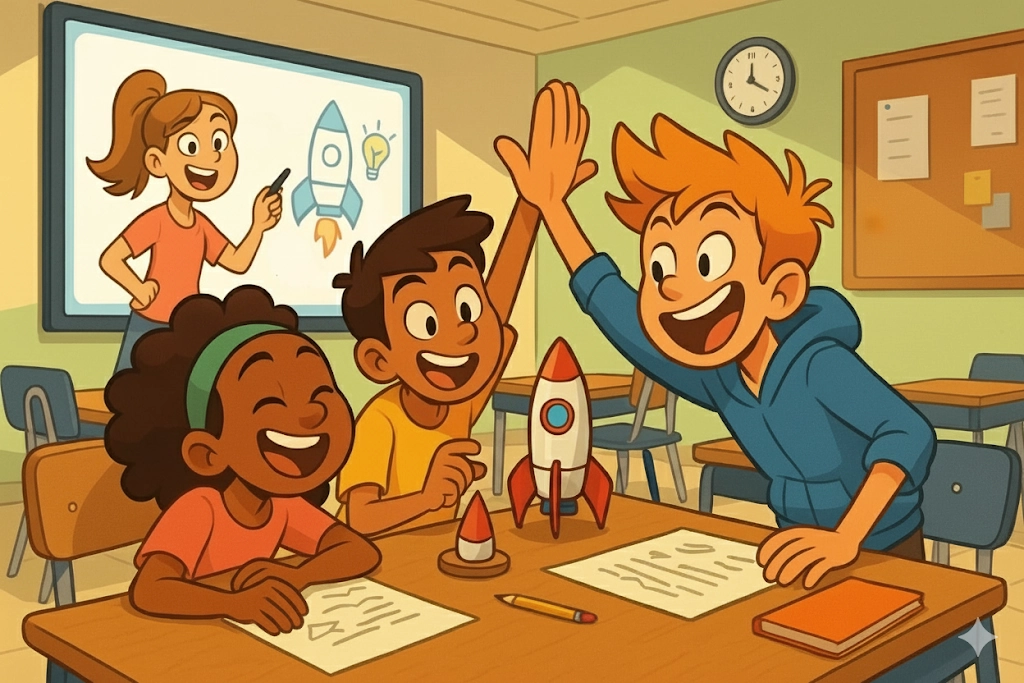
Besides working independently, school offers great opportunities for a deeper dive into STEM subjects. Let’s see how you can make the most of this time.
Group STEM Challenges
Collaborative projects allow students to practice teamwork while tackling complex problems. These activities often mirror real workplace environments where diverse skills contribute to successful outcomes.
Effective group challenges:
- Design competitions with specific constraints
- Research projects addressing local community issues
- Prototype development for imaginary companies
- Peer teaching projects where students explain concepts
Group work in STEM helps students develop communication skills essential for future careers while learning from diverse perspectives and approaches to problem-solving.
STEM Clubs
After-school STEM clubs provide dedicated time and space for extended exploration of STEM topics. These clubs often participate in competitions, field trips, and guest speaker events that expose students to STEM careers.
Successful STEM clubs typically focus on hands-on projects that allow students to apply classroom learning in practical ways. They may also connect with local professionals who can provide mentorship and real-world context for student work.
Engaging Activities for Each Pillar of STEM ⚛️
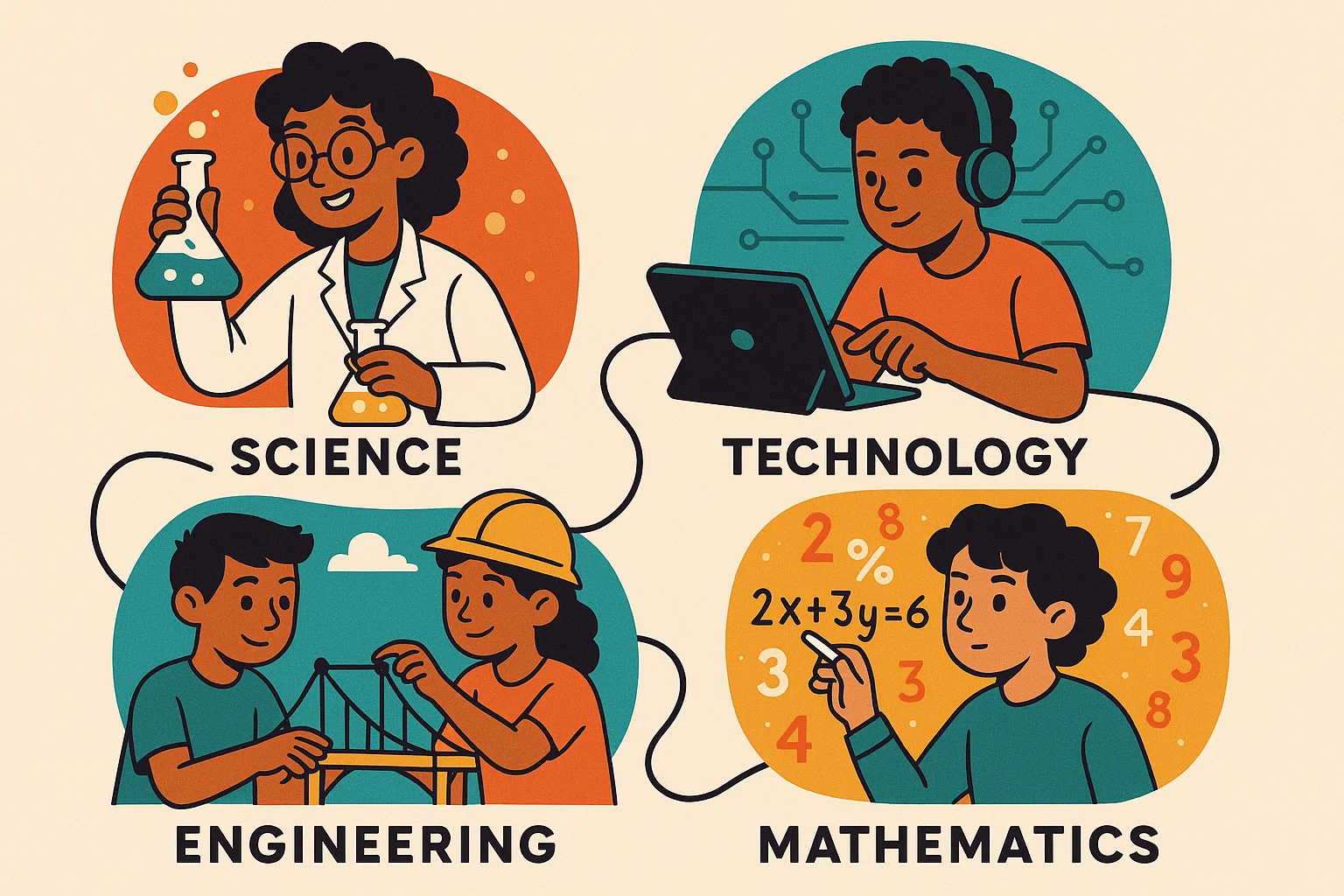
STEM isn’t just one subject—it’s four interconnected fields. Each one offers unique opportunities for exploration and discovery.
Science Projects
Scientific investigation projects help teens develop the methodical thinking essential to research and discovery. These activities should encourage hypothesis formation, controlled experimentation, and data analysis.
Compelling science project areas:
- Environmental monitoring and analysis
- Human biology and health investigations
- Physics experiments exploring motion and energy
- Chemistry projects examining reaction rates and conditions
Each project should encourage students to ask questions, design experiments, and draw conclusions based on evidence rather than assumptions.
Technology Projects
Technology projects expose teens to digital tools and computational thinking. These activities may include app development, website creation, or digital art projects that combine creativity with technical skills.
Modern technology projects often integrate multiple platforms and require students to learn new software or programming languages independently, developing the self-directed learning skills crucial for keeping pace with technological advancement.
Engineering Projects
Engineering activities challenge students to design and build solutions to specific problems. The engineering design process provides a framework for systematic problem-solving that students can apply across many subjects.
Successful engineering projects typically include clear constraints, multiple possible solutions, and opportunities for testing and iteration. Students learn that failure is part of the design process and that persistence leads to improvement.
Mathematics Projects
Mathematical applications become more meaningful when connected to real-world scenarios. Projects might involve statistical analysis of collected data, geometric principles in construction projects, or algebraic modeling of natural phenomena.
These hands-on mathematics experiences help students understand why mathematical concepts matter and how they apply beyond the classroom setting.
Tips for Parents and Educators 👨👩👧👦
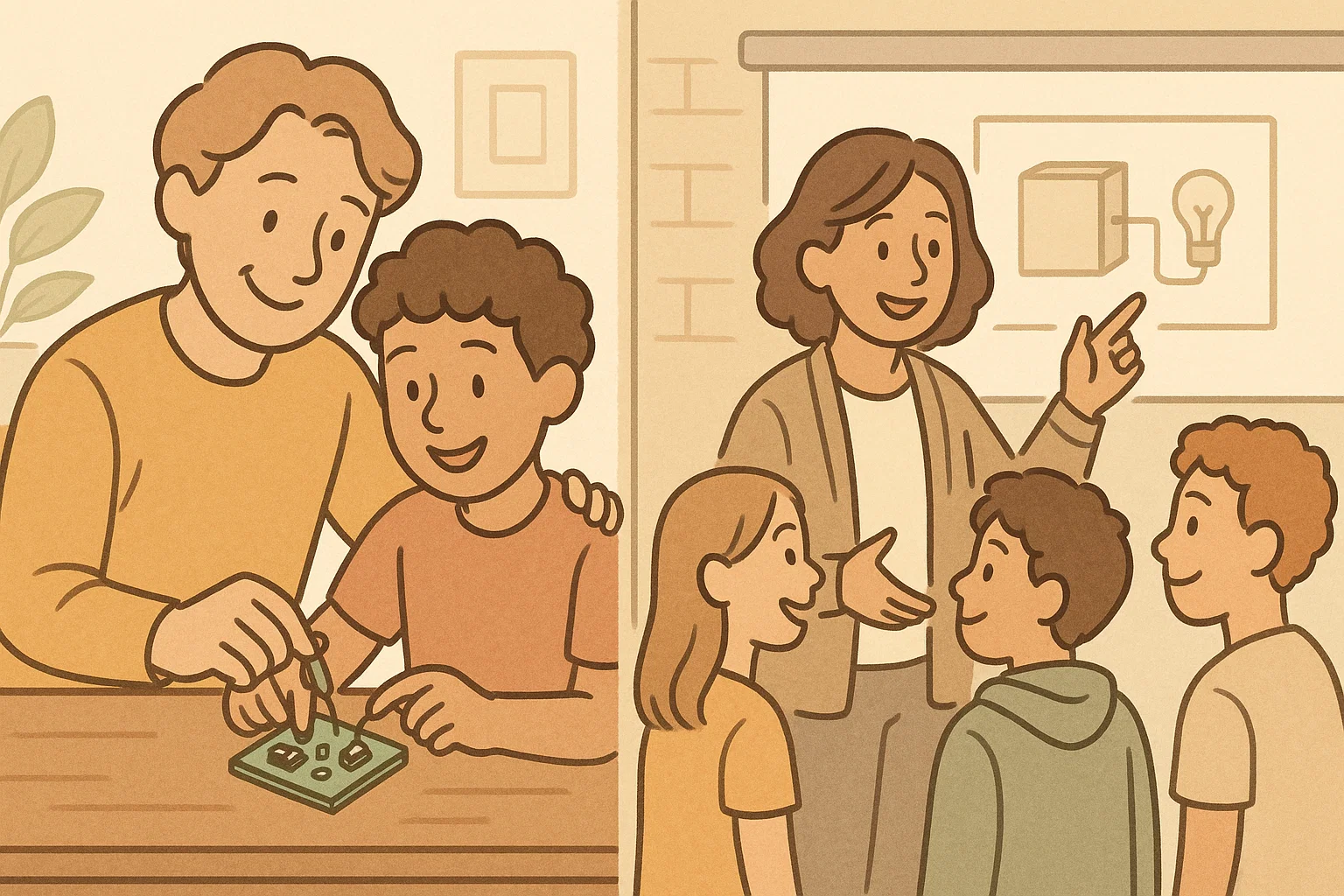
The role of adults is invaluable in this process. Here are a few tips on how to support your teen’s interest and help them thrive in the world of science.
How to Spark Teen Interest in STEM
Creating enthusiasm for STEM requires connecting abstract concepts to teen interests and real-world applications. Consider these approaches:
Effective strategies include:
- Connecting projects to current events or popular culture
- Allowing choice in project topics and approaches
- Celebrating both success and learning from failure
- Providing access to role models in STEM careers
- Emphasizing the creative aspects of STEM work
Research from the Wiley Online Library indicates that teens are more likely to engage with activities that feel relevant to their lives and future goals. Making these connections explicit helps maintain motivation through challenging aspects of STEM learning.
How to Support STEM Learning
Supporting teen STEM exploration requires balancing guidance with independence. Adults should provide resources and encouragement while allowing students to take ownership of their learning process.
Supportive actions include:
- Asking open-ended questions about student work
- Helping locate appropriate materials and resources
- Connecting students with mentors in STEM fields
- Celebrating progress and effort rather than just results
- Encouraging persistence through challenges
The goal is to foster independent problem-solving skills while providing the scaffolding necessary for success.
FAQ about Teen STEM Activities
What makes these activities "engaging"?
Engaging STEM activities share several key characteristics that appeal to teenage learners. They typically involve hands-on manipulation of materials, provide immediate feedback on student efforts, and connect to topics that students find personally relevant or interesting.
The most effective activities also allow for creativity and multiple solution paths, giving students ownership over their learning process. When teens can see tangible results from their work and understand how their efforts connect to broader goals, engagement naturally increases.
Are these suitable for school?
Most of these activities can be adapted for classroom use, though some may require modifications based on available resources and time constraints. Teachers should consider safety requirements, material costs, and curriculum alignment when selecting projects for school implementation.
Many activities work well as long-term projects that students can work on over several class periods, allowing for the iterative process that makes engineering design meaningful and realistic.
How can I build interest in STEM?
Building genuine interest in STEM requires patience and persistence, as individual students may respond to different approaches and timelines. Start with activities that connect to existing student interests, whether that’s sports, music, art, or social issues.
Providing opportunities for success early in the process helps build confidence that can sustain students through more challenging projects later. Remember that interest often develops through positive experiences with hands-on activities rather than through lectures about why STEM careers are important.
